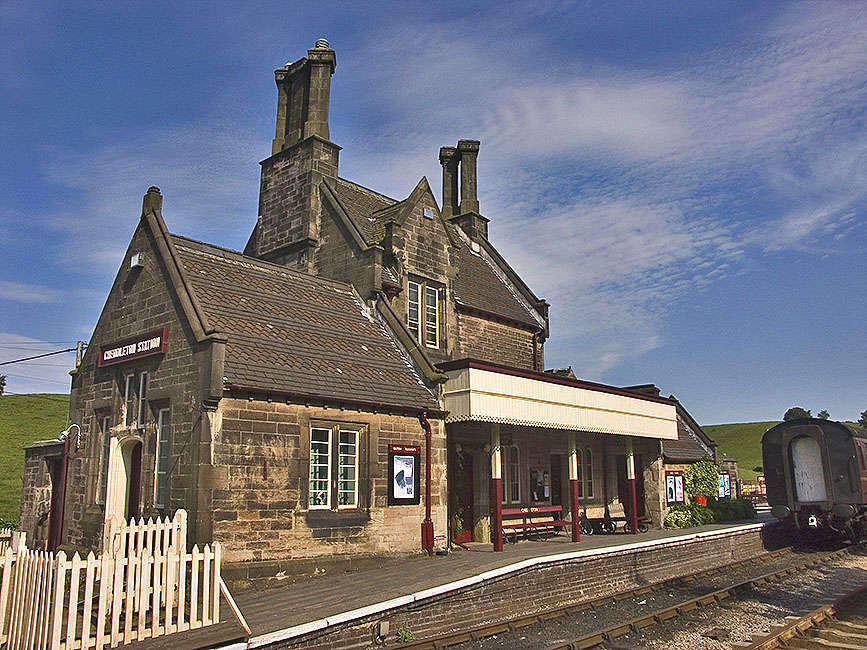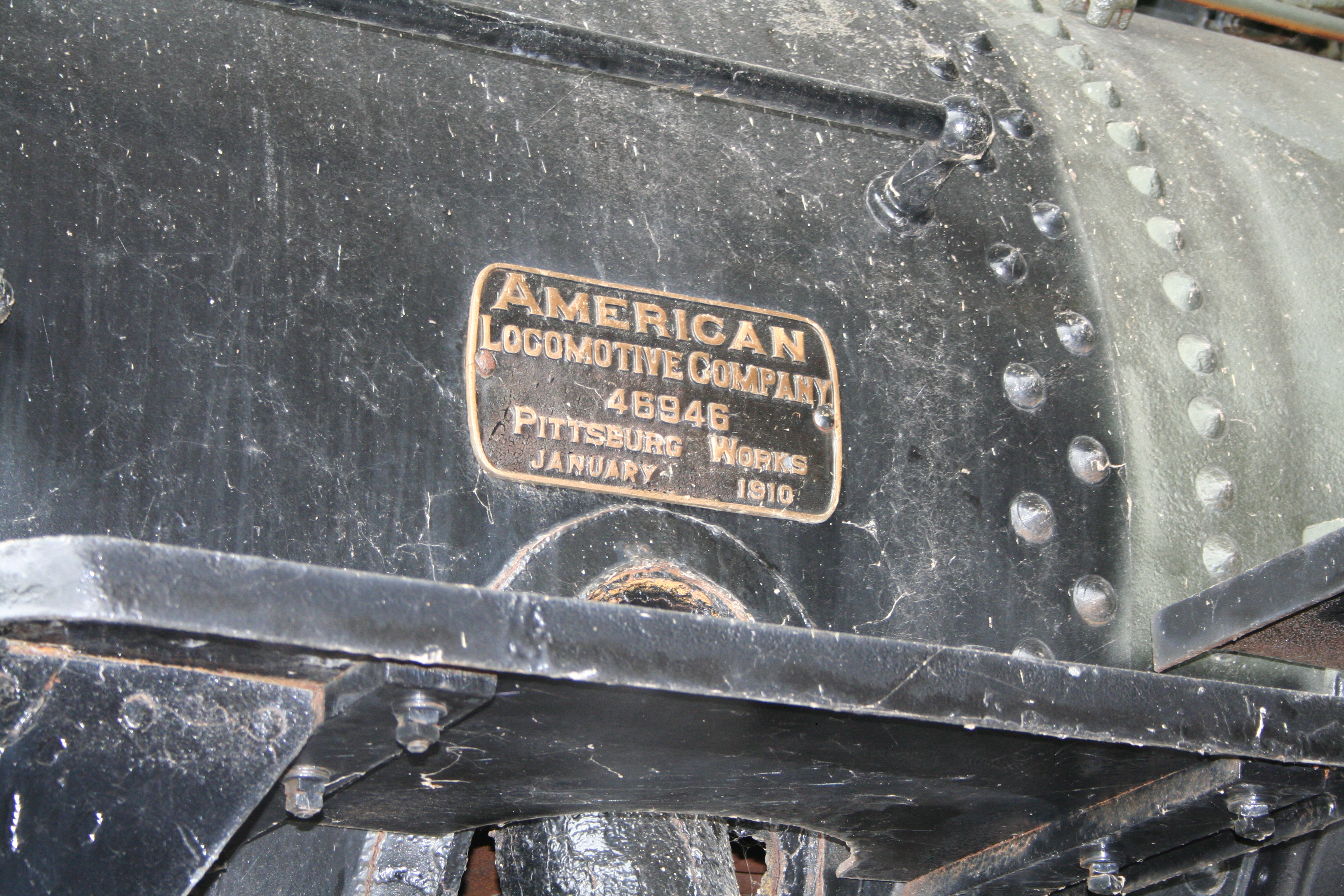|
MÁV Class 411
The MÁV Class 411 was a class of steam locomotives used by Hungarian railways. History After World War II, Hungary, like many of the war-torn European countries, suffered a severe shortage of motive power, with much of the MÁV stock either damaged, destroyed, or confiscated by German forces to replace their damaged equipment. The US Government offered Hungary a $150 million commodity loan and a part of this was used to purchase 510 pieces of the USATC S160 Class steam locomotives, for $10,000 each. The negotiations started in 1946, with the first engines arriving in May 1947. The origins of the Hungarian S160s were as follows: *ALCO - 159 pc. * Baldwin - 148 pc. *Lima - 203 pc. In their delivery state 425 locomotives were set up as coal burners while 85 engines were oil burners, the engines could easily be converted from one fuel to the other as needed. The locomotives were classified due to their four driven axles and an axle load higher than 14.3 metric tons as MÁV Class ... [...More Info...] [...Related Items...] OR: [Wikipedia] [Google] [Baidu] |
American Locomotive Company
The American Locomotive Company (often shortened to ALCO, ALCo or Alco) was an American manufacturer of locomotives, diesel generators, steel, and tanks that operated from 1901 to 1969. The company was formed by the merger of seven smaller locomotive manufacturers and Schenectady Locomotive Works, Schenectady Locomotive Engine Manufactory of Schenectady, New York. A subsidiary, American Locomotive Automobile Company, designed and manufactured automobiles under the Alco brand from 1905 to 1913. ALCO also produced nuclear reactors from 1954 to 1962. The company changed its name to Alco Products, Incorporated in 1955. In 1964, the Worthington Corporation acquired the company. The company went out of business in 1969. The ALCO name is currently being used by Fairbanks-Morse, Fairbanks Morse Engine for their FM, ALCO line. Foundation and early history The company was created in 1901 from the merger of seven smaller locomotive manufacturers with Schenectady Locomotive Works, Schenect ... [...More Info...] [...Related Items...] OR: [Wikipedia] [Google] [Baidu] |
Churnet Valley Railway
The Churnet Valley Railway is a preserved standard gauge heritage railway in the Staffordshire Moorlands of Staffordshire, England. It operates on part of the former Churnet Valley Line.which was opened by the North Staffordshire Railway. The railway is roughly long from Kingsley and Froghall to Ipstones. The land from Leek Brook Junction to Ipstones was opened by Moorland & City Railways (MCR) in 2010 after they took a lease out from Network Rail. This has subsequently been purchased by the Churmet Valley Railway. The main stations along the line are Kingsley and Froghall, Consall, Cheddleton and Leek Brook (which is only used as a run around loop). Work has begun to extend the line to the town of Leek which will act as the northern terminus of the line. The line between Leek and Waterhouses has also been reopened as part of the heritage railway far as Ipstones. Preservation history Early days of preservation: Cheddleton station (1964–1977) The Cheshire and S ... [...More Info...] [...Related Items...] OR: [Wikipedia] [Google] [Baidu] |
Standard Gauge Locomotives Of Hungary
Standard may refer to: Symbols * Colours, standards and guidons, kinds of military signs * Standard (emblem), a type of a large symbol or emblem used for identification Norms, conventions or requirements * Standard (metrology), an object that bears a defined relationship to a unit of measure used for calibration of measuring devices * Standard (timber unit), an obsolete measure of timber used in trade * Breed standard (also called bench standard), in animal fancy and animal husbandry * BioCompute Standard, a standard for next generation sequencing * ''De facto'' standard, product or system with market dominance * Gold standard, a monetary system based on gold; also used metaphorically for the best of several options, against which the others are measured * Internet Standard, a specification ratified as an open standard by the Internet Engineering Task Force * Learning standards, standards applied to education content * Standard displacement, a naval term describing the weig ... [...More Info...] [...Related Items...] OR: [Wikipedia] [Google] [Baidu] |
Railway Locomotives Introduced In 1947
Rail transport (also known as train transport) is a means of transport that transfers passengers and goods on wheeled vehicles running on rails, which are incorporated in tracks. In contrast to road transport, where the vehicles run on a prepared flat surface, rail vehicles (rolling stock) are directionally guided by the tracks on which they run. Tracks usually consist of steel rails, installed on sleepers (ties) set in ballast, on which the rolling stock, usually fitted with metal wheels, moves. Other variations are also possible, such as "slab track", in which the rails are fastened to a concrete foundation resting on a prepared subsurface. Rolling stock in a rail transport system generally encounters lower frictional resistance than rubber-tyred road vehicles, so passenger and freight cars (carriages and wagons) can be coupled into longer trains. The operation is carried out by a railway company, providing transport between train stations or freight customer facil ... [...More Info...] [...Related Items...] OR: [Wikipedia] [Google] [Baidu] |
Lima Locomotives
Lima ( ; ), originally founded as Ciudad de Los Reyes (City of The Kings) is the capital and the largest city of Peru. It is located in the valleys of the Chillón, Rímac and Lurín Rivers, in the desert zone of the central coastal part of the country, overlooking the Pacific Ocean. Together with the seaside city of Callao, it forms a contiguous urban area known as the Lima Metropolitan Area. With a population of more than 9.7 million in its urban area and more than 10.7 million in its metropolitan area, Lima is one of the largest cities in the Americas. Lima was named by natives in the agricultural region known by native Peruvians as ''Limaq''. It became the capital and most important city in the Viceroyalty of Peru. Following the Peruvian War of Independence, it became the capital of the Republic of Peru (República del Perú). Around one-third of the national population now lives in its metropolitan area. The city of Lima is considered to be the political, cultural, fin ... [...More Info...] [...Related Items...] OR: [Wikipedia] [Google] [Baidu] |
Baldwin Locomotives
Baldwin is a Germanic name, composed of the elements ''bald'' "bold" and ''win'' "friend". People * Baldwin (name) Places Canada * Baldwin, York Regional Municipality, Ontario * Baldwin, Ontario, in Sudbury District * Baldwin's Mills, Quebec United States * Baldwin County, Alabama * Baldwin, Florida * Baldwin, Georgia * Baldwin County, Georgia * Baldwin, Illinois * Baldwin, Iowa * Baldwin, Louisiana * Baldwin, Maine * Baldwin, Maryland * Baldwin, Michigan * Baldwyn, Mississippi * Baldwin, Chemung County, New York * Baldwin, Nassau County, New York ** Baldwin (LIRR station) * Baldwin, North Dakota * Baldwin, Pennsylvania * Baldwin, Wisconsin * Baldwin (town), Wisconsin Other places * Baldwin Street, in Dunedin, New Zealand, the world's steepest street * Baldwin Hills, neighborhood in Los Angeles, California * Montgomery, Powys, named in Welsh "Trefaldwyn", meaning "The Town of Baldwin" Companies * Baldwin Locomotive Works, one of the world's largest builders of ... [...More Info...] [...Related Items...] OR: [Wikipedia] [Google] [Baidu] |
ALCO Locomotives
The American Locomotive Company (often shortened to ALCO, ALCo or Alco) was an American manufacturer of locomotives, diesel generators, steel, and tanks that operated from 1901 to 1969. The company was formed by the merger of seven smaller locomotive manufacturers and Schenectady Locomotive Engine Manufactory of Schenectady, New York. A subsidiary, American Locomotive Automobile Company, designed and manufactured automobiles under the Alco brand from 1905 to 1913. ALCO also produced nuclear reactors from 1954 to 1962. The company changed its name to Alco Products, Incorporated in 1955. In 1964, the Worthington Corporation acquired the company. The company went out of business in 1969. The ALCO name is currently being used by Fairbanks Morse Engine for their FM, ALCO line. Foundation and early history The company was created in 1901 from the merger of seven smaller locomotive manufacturers with Schenectady Locomotive Engine Manufactory of Schenectady, New York: *Brooks Locomot ... [...More Info...] [...Related Items...] OR: [Wikipedia] [Google] [Baidu] |
Steam Locomotives Of Hungary
Steam is a substance containing water in the gas phase, and sometimes also an aerosol of liquid water droplets, or air. This may occur due to evaporation or due to boiling, where heat is applied until water reaches the enthalpy of vaporization. Steam that is saturated or superheated is invisible; however, "steam" often refers to wet steam, the visible mist or aerosol of water droplets formed as water vapor condenses. Water increases in volume by 1,700 times at standard temperature and pressure; this change in volume can be converted into mechanical work by steam engines such as reciprocating piston type engines and steam turbines, which are a sub-group of steam engines. Piston type steam engines played a central role in the Industrial Revolution and modern steam turbines are used to generate more than 80% of the world's electricity. If liquid water comes in contact with a very hot surface or depressurizes quickly below its vapor pressure, it can create a steam explosion. Types ... [...More Info...] [...Related Items...] OR: [Wikipedia] [Google] [Baidu] |
Nottingham Transport Heritage Centre
The Nottingham Heritage Railway (formerly known as Great Central Railway (Nottingham) and Nottingham Transport Heritage Centre) is a heritage railway and transport museum on the south side of the village of Ruddington in Nottinghamshire. The route consists of almost of the former Great Central Railway Main Line from Loughborough South Junction (with the Midland Main Line) to Fifty Steps Bridge and the site of Ruddington's former GCR station, plus a branch line from Fifty Steps Bridge to Ruddington Fields station which is located on a former Ministry of Defence site next to Rushcliffe Country Park. There are stations open to the public at Ruddington Fields (within the main centre site) and at Rushcliffe Halt. The GCR(N) aim to re-open the former station at East Leake in the longer term. The railway is currently not connected to Great Central Railway (at Loughborough Central in Leicestershire), although there are plans well underway and work has started to reunite the two p ... [...More Info...] [...Related Items...] OR: [Wikipedia] [Google] [Baidu] |
East Lancashire Railway
East Lancashire Railway is a heritage railway line in North West England which runs between Heywood, Greater Manchester and Rawtenstall in Lancashire. There are intermediate stations at Bury Bolton Street railway station, Bury Bolton Street, , Summerseat railway station, Summerseat and Ramsbottom railway station, Ramsbottom, with the line crossing the border into Borough of Rossendale, Rossendale serving Irwell Vale railway station, Irwell Vale and Rawtenstall railway station, Rawtenstall. Before closure, the line terminated at Bacup railway station, Bacup. Overview Passenger services between Bury and Rawtenstall were withdrawn by British Rail on 3 June 1972. Coal services to Rawtenstall ended in 1980 and formal closure of the line followed in 1982. The East Lancashire Railway Trust reopened the line on 25 July 1987. The initial service operated between Bury, Greater Manchester, Bury and Ramsbottom, via Summerseat. In 1991, the service was extended northwards from Ramsbotto ... [...More Info...] [...Related Items...] OR: [Wikipedia] [Google] [Baidu] |


%2C_Guamán_Poma%2C_1616.jpg)


